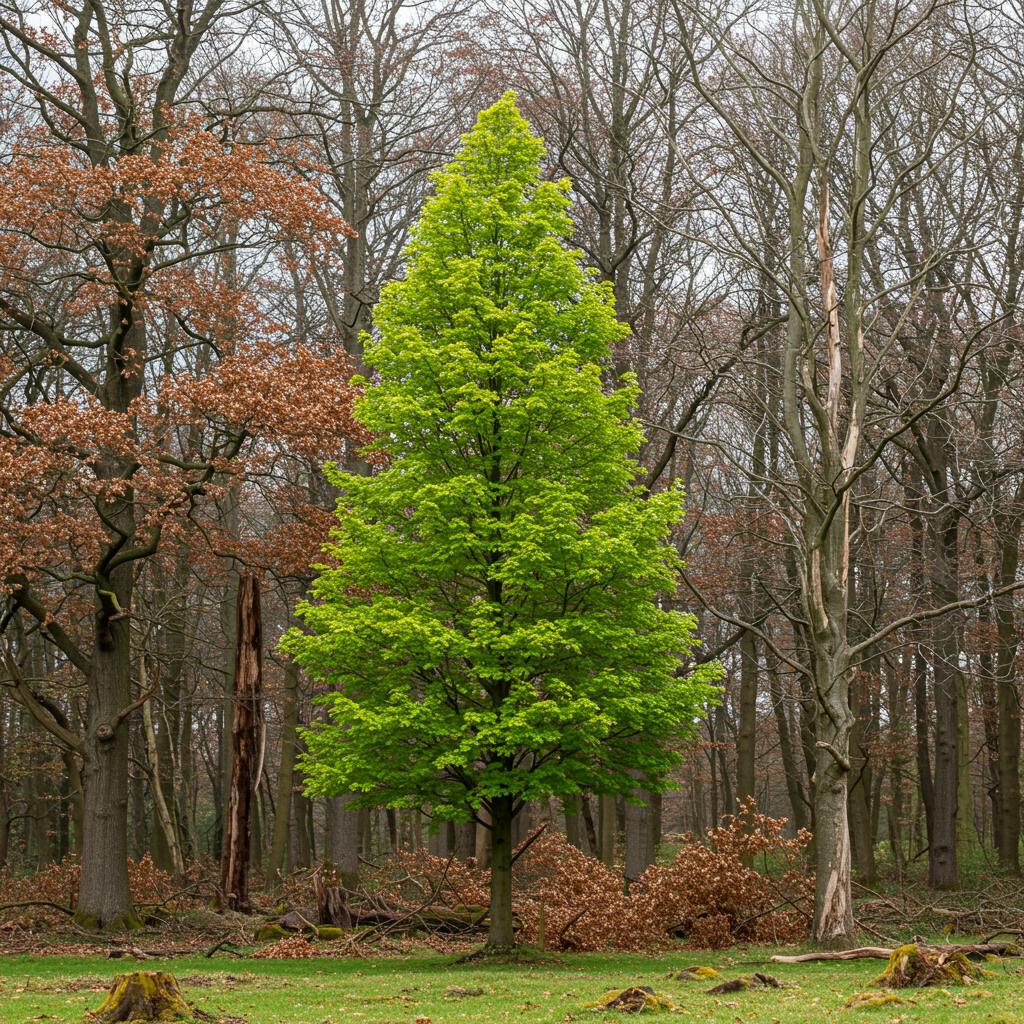Ash trees stand as a cornerstone of Britain’s woodlands, accounting for over one in eight deciduous trees, with populations exceeding 150 million individuals. However, for more than a decade, this vital species has faced a catastrophic threat: ash dieback, a deadly disease caused by the invasive Asian fungus, Hymenoscyphus fraxineus.
The impact has been severe. Between 2015 and 2019 alone, an estimated 29 percent of all living ash trees died. Predictions have been stark, suggesting that up to 85 percent of UK ash trees could ultimately succumb to the disease. Symptoms typically include characteristic orange-brown lesions where branches meet the trunk, dead shoots and branches, and black, wilting leaves. The fungus, first identified in Britain in 2012, spread rapidly via imported trees and wind-borne spores.
A Glimmer of Hope: DNA Reveals Emerging Resistance
Despite the devastating losses, a new study offers a crucial glimmer of hope. Research conducted by scientists at Kew Gardens and Queen Mary University of London suggests that British ash trees are beginning to evolve natural resistance to the dieback fungus.
By analyzing the DNA of ash trees, including those in ancient woodlands like Marden Park in Surrey, researchers found subtle yet significant shifts in genetic variants. These changes, observed across thousands of locations within the ash genome when comparing trees established before and after the fungus arrived, indicate that younger generations of ash trees are showing greater resistance than their older counterparts.
How Natural Selection is Helping Ash Fight Back
This emerging resistance is attributed to natural selection actively at work in the wild. Professor Richard Buggs, a professor of evolutionary genomics, highlights a key difference between ash trees and the elms that were largely wiped out by Dutch elm disease: ash trees are incredibly prolific reproducers. A single ash tree can produce up to 100,000 distinctive winged seeds, known as ‘keys’ or ‘helicopter seeds,’ every two years.
This abundance of offspring provides vast raw material for natural selection. Highly susceptible young trees quickly die off, while those with genetic traits offering even partial resistance have a better chance of survival and passing on those traits. The study provides compelling real-world evidence of this Darwinian process driving change, specifically on a complex trait like disease resistance influenced by many genes simultaneously – a phenomenon often discussed in theory but rarely proven so clearly in a natural setting. The mechanisms driving this selection likely include reduced seed production by severely diseased older trees and the rapid elimination of susceptible young trees before they mature.
The Crucial Need for Human Intervention
While nature is playing a vital role, scientists caution that natural selection alone may not be enough to fully secure the future of British ash. Dr. Carey Metheringham, who conducted research for the study, points out that the existing genetic variation within the ash population might be too limited. Furthermore, as tree numbers decline, the rate at which natural selection can drive change could slow down.
Therefore, human intervention remains crucial to accelerate this evolutionary process and enhance survival rates. Recommended actions include targeted selective breeding programmes to propagate the most resistant individuals and actively protecting young, potentially resistant saplings from threats like deer grazing. These efforts, supported by organisations like the Woodland Trust and government bodies like Defra, are seen as essential alongside natural regeneration to help secure the long-term survival of native ash populations.
Why Saving Ash Matters
The survival of ash trees is not just about preserving a single species; it’s vital for the health of the entire woodland ecosystem. Ash is considered a keystone species, supporting an incredible diversity of life. It’s estimated that over 950 other species depend on ash trees, including nearly 550 types of lichens, 240 invertebrates, 28 mammals, and 12 birds.
Beyond the ecological toll, the economic cost of ash dieback is also staggering. The loss of ecosystem services provided by ash trees is estimated to cost the UK economy a potential £15 billion over the next century.
In conclusion, while the threat of ash dieback remains significant and the path to recovery is challenging, the new DNA research offers genuine hope. It demonstrates that British ash trees possess an inherent capacity to evolve resistance through natural selection. However, successfully navigating this crisis and safeguarding this precious species and the vast web of life it supports will undoubtedly require dedicated human conservation efforts alongside nature’s own resilience.




